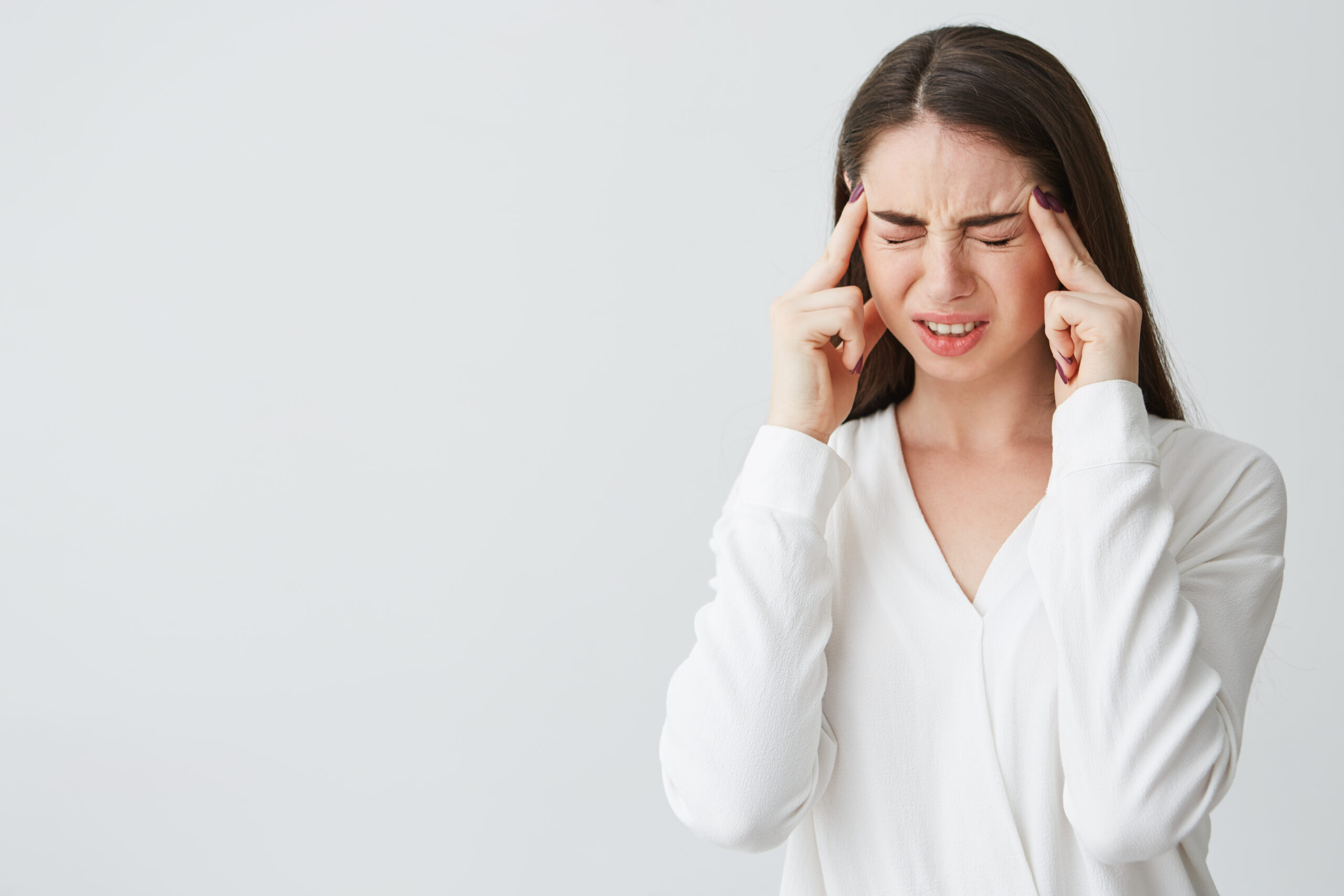Labyrinthine disorders coexisting with a central neurological or cardiovascular cause are classified as multifactorial.
An idiopathic diagnosis is only made after other causes have been excluded and the patient’s dizziness has resolved. Patients with neck pain or occipital headache but no features of otological or neurological disease in whom changes in neck position provoke vertigo is diagnosed with Musculoskeletal (cervical) vertigo.
Migraine is the most common cause of central vestibular disorders.
The following characteristics are associated with MIGRAINE –
1. Usually begins in the first three decades and prevalence peaks in the fifth decade.
2. Family history is often present.
3. Migraine without aura is the most common variety.
4. The usual migraine headache is unilateral, throbbing, moderate to markedly severe, and aggravated by physical activity.
5. Sensitivity to light and noise is common.
6. Migraine headaches may be associated with episodic vertigo, motion sensitivity, and nonspecific dizziness, such as swimming or rocking sensations inside the head.
7. Episodic vertigo (rotational or to-and-fro) usually lasts for a few minutes to several hours.
8. Vertigo is associated with postural imbalance and unsteadiness with motion sensitivity or visual hallucinations.
9. Vertigo after taking particular food.
10. Multiple attacks may be several per month.
11. Vertigo usually occurs during the headache but may occur during the headache-free interval or preceding the headache.
Some of the other common causes are enumerated below:
• VASCULAR
– Ischemic stroke/transient ischemic attack
– Subclavian steal syndrome
– Vertebrobasilar transient ischemic attacks
– Wallenberg’s syndrome
– Lateral pontomedullary infarction
– Cerebellar infarction
– Hemorrhage: Brainstem and cerebellar
– Migraine: Basilar migraine and vestibular migraine
• INFLAMMATORY
– Multiple sclerosis
– Cerebellitis
– Susac syndrome
• INFECTIOUS
– Intracranial complications of otitis media
– Meningitis
– Cerebellar abscess (fungal or bacterial)
• CRANIOCERVICAL JUNCTION DISORDERS
– Chiari malformation
• METABOLIC
– Wernicke’s encephalopathy
– Diabetes
– Vitamin B12 deficiency
– Hypoparathyroidism
– Hypoglycemia
– Hyperventilation
• TOXIC
– Medications (methotrexate) and alcohol
• DEGENERATIVE
– Parkinson’s disease
• TRAUMA
– Post-concussion syndrome
• PHYSIOLOGIC
– Motion sickness
• PSYCHOPHYSIOLOGIC
– Chronic anxiety
– Panic disorder
– Phobic postural vertigo
• MULTISENSORY DISTURBANCES
– Peripheral neuropathy and visual loss
– Aging: Cerebellar atrophy and diffuse small vessel ischemia
BASILAR MIGRAINE
It is a subtype of migraine with an aura.
Characteristics of BASILAR MIGRAINE are-
1. Recurrent headache is usually occipital.
2. This is associated with a minimum of two of the multiple neurologic symptoms of the brain stem, cerebellum, and occipital lobe (supplied by the basilar artery).
3. Consciousness is impaired quite often.
4. Symptoms of vertigo, fluctuating hearing loss, and tinnitus may make basilar migraine difficult to distinguish from Ménière’s disease and vertebrobasilar transient ischemic attacks (TIAs).
5. Tinnitus is common.
6. Low frequency fluctuating hearing loss is common.
7. Sudden profound unilateral sensorineural hearing loss occurs occasionally.
8. Migraine-related vasospasm can cause cochlear infarction.
Treatment of Acute MIGRAINE Attacks
A) NONSPECIFIC TREATMENT:
Analgesics (or Painkillers):
- Aspirin,
- Acetaminophen,
- Nonsteroidal anti-inflammatory drugs, and
- A combination of analgesics.
Side effects of ANALGESICS:
Medication overuse headache and analgesic rebound headache.
2) MIGRAINE-SPECIFIC TREATMENT:
Triptans:
- Sumatriptan,
- Naratriptan,
- Rizatriptan,
- Zolmitriptan,
- Almotriptan,
- Frovatriptan and
- Eletriptan.
Side effects of TRIPTANS:
High cost and contraindications in cardiovascular disorders.
Because of the theoretical risk of vasospasm and stroke, triptans are contraindicated in basilar migraine.
3) Treatment of Vestibular Symptoms
The following antiemetic and antivertiginous agents are used:
- Promethazine 25 mg or 50 mg daily or via suppositories (sedative) for severe cases.
- Meclizine and dimenhydrinate are less sedative and useful for milder episodes.
- Metoclopramide improves gastric motility, aid the absorption of oral drugs, and reduces nausea and vomiting.
4) Prophylactic Medications for MIGRAINE
Start with a low dose and increase gradually to prevent side effects.
a) Beta-blockers:
Propranolol and metoprolol are useful for preventing migraine vertigo.
b) Tricyclic amines:
Amitriptyline and nortriptyline, which are effective and well-tolerated, are advocated as the first-line medical treatment.
c) Calcium channel blockers:
Verapamil and nimodipine prevent vasospasm of inner ear arteries.
They may also stabilize metabolic defect in cases of abnormal calcium channel, such as familial hemiplegic migraine and episodic ataxia type 2 (EA-2).
d) Antiepileptic drugs:
Valproic acid, Gabapentin (effective and well-tolerated), and Topiramate.
e) Carbonic anhydrase inhibitor:
Acetazolamide presumably changes cerebellar pH and stabilizes defective calcium channels and dramatically effective in EA-2.
f) Benzodiazepines with clonazepam:
Modulate central and peripheral vestibular gamma-aminobutyric acid receptors.
g) Selective serotonin-reuptake inhibitors:
Fluoxetine and Venlafexine treat psychiatric symptoms (depression, anxiety, panic attacks, and psychophysiologic vertigo), which may develop in vestibular migraine.
Lifestyle Changes for MIGRAINE
- Regular sleep
- Regular meals
- Exercise
- Regular aerobic exercise
- Tai Chi exercises in cases of mild imbalance
- Increasing the level of physical activity
- Avoiding peaks of stress and troughs of relaxation
- Avoid dietary triggers
- Relaxation training and biofeedback
- Physical therapy and vestibular rehabilitation when daily activities are limited due to dizziness.
Vertigo spells in children: Migraine is not uncommon in children.
It must be considered when vertigo spells are not associated with ear malformations or middle ear infections.
THANK YOU
MEDICAL ADVICE DISCLAIMER:
This blog including information, content, references, and opinions is for informational purposes only.
The Author does not provide any medical advice on this platform.
Viewing, accessing, or reading this blog does not establish any doctor-patient relationship.
The information provided in this blog does not replace the services and opinions of a qualified medical professional who examines you and then prescribes medicines.
And if you have any questions of medical nature, please refer to your doctor or qualified medical personnel for evaluation and management at a clinic/hospital near you.
The content provided in this blog represents the Author’s own interpretation of research articles.
